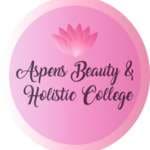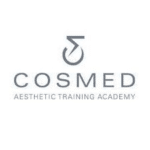Beauty care courses teach about a creative and dynamic industry. The best beauticians keep abreast of changes in the industry through beauty courses. They are excited to learn about new techniques and technologies and incorporate them into their work.
Beauticians not only carry out beauty procedures. In addition, they recommend products and treatments to clients. This means that a beautician is part beauty therapist, part beauty salesperson. However, it is not about selling the most products and treatments – it’s about recommending what will produce the best results for a client. Beauty care professionals need to understand what their clients want and need, and clients need to be able to trust their beauticians.
Why enrol in a beauty care course?
Beauty care is a career generally associated with women, however men are increasingly choosing this as a profession too. Firstly, more and more men realise the benefits of beauty treatments. Furthermore, beauty care is a career that is always in demand yet one allows for creativity and flexibility.
There are a number of personal characteristics beauticians needs to have. They should enjoy working with people, be friendly, open and engaging. A great cosmetologist needs to make people feel welcome and relaxed.
Furthermore, this is also a career where you really need to look the part! Beauty care professionals should be well groomed, and skilfully styled.
Finally, a beautician needs to pay attention to detail and produce flawless work. Incorrectly applied treatments do not work, and some – such as hot wax – can be dangerous if done wrong.
A brief history beauty care
Beauty care is a steady career for talented people because for as long as there have been humans, there has been beauty care and cosmetics. We seem to have an innate desire to enhance our looks. Let’s have a look a few examples from the past.
In ancient Egypt, about 6000 years ago, women used a mixture made of copper and lead ore with bright green malachite to colour their faces. It was also around this period that kohl, to line the eyes, became popular.
During the early Roman Empire, mud baths were popular, which is rather nice, but so was using the fat and blood of sheep to polish fingernails… Blond hair was fashionable and Roman men were not above using artifice to achieve lighter locks.
Cosmetics were usually the preserve of the aristocracy. In the early Renaissance period, France and Italy began manufacturing some frankly terrifying beauty products. Face powder contained ingredients like arsenic or lead.
In Elizabethan England, it was fashionable to have red hair and pale skin. Women routinely died their hair and used egg whites on their faces to create a pale complexion. Egg white is harmless enough but women also used white lead paint to lighten the skin. In case you were wondering this is a terrible idea and poisonous. Accidental deaths were not unheard of.
Although Queen Elizabeth I was fond of make-up, Queen Victoria publicly declared makeup improper. She thought it vulgar and high society followed her opinion.
During the Edwardian period, however, beauty care and beauty salons increased in popularity. Women were sometimes ashamed of needing help and often entered through the back door. Not unlike some men today!
What’s involved?
New beauty care students will first learn the principals behind beauty therapy. This will include skins care, manicure and pedicures, waxing treatments and so forth.
Some students prefer to start with a course that covers the basics. This allows them to gain a qualification and begin working before undertaking further studies. The ITEC Beauty Specialist Level 2 Diploma takes twenty weeks to complete. This is the foundation to a career in the beauty industry.
Successful students are qualified in five areas of beauty:
- Full facial and skin care
- Manicure and pedicure,
- Eyebrow and eyelash tinting plus shaping
- Make up
- Waxing
Students who wish to do a more involved course can do a full-time CIDESCO/CIBTAC course. These generally run from September to June. Students cover three CIBTAC modules and then begin the CIDESCO module of the course.
CIBTAC is the education arm of the British Association of Beauty Therapy & Cosmetology. It is a not-for-profit organisation.
CIDESCO is an international beauty care trade and educational association. Their aim is to uphold the highest standards of beauty and spa therapy throughout the world.
Most courses are classroom based, but it is possible to study beauty through online and distance learning too. For more information on courses, see our Beauty category.

















